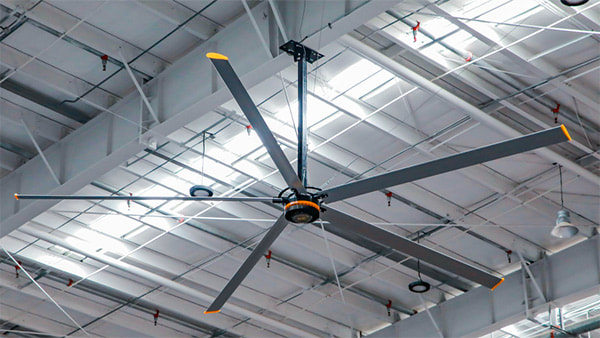Residential Fans: Enhancing Comfort and Efficiency in Every Home

Introduction
In modern homes, comfort extends far beyond mere aesthetics. It encompasses air quality, temperature control, and energy efficiency. Residential fans—from ceiling fans to tower and wall-mounted units—have become essential components in shaping a comfortable living environment. With thoughtful design, innovative technologies, and diverse styles, fans now offer much more than basic airflow. They contribute to health, sustainability, noise control, and interior décor in a way that resonates with modern lifestyle trends. In this comprehensive article, we explore the evolution, benefits, technological advances, design considerations, and future outlook of residential fans.
The Role of Fans in the Home
Fans have played a crucial role in households for centuries, helping to create airflow and lower perceived room temperature. In tropical or temperate climates, circulating air helps reduce the oppressive feeling of heat and humidity. Unlike air-conditioning systems that use refrigerants and consume significant energy, fans rely on simple aerodynamic principles—creating windchill that enhances natural cooling of the skin. Beyond temperature regulation, fans assist with indoor air quality by reducing stagnant air, helping to disperse cooking odors, preventing mold and mildew, and improving ventilation in tightly insulated homes.
Residential fans are also key components in energy-conscious home design. When used alongside passive cooling strategies—such as open windows, strategic shading, and thermal mass—they reduce the demand for mechanical air conditioning. These devices can be integrated with ceiling insulation and smart thermostats to create a well-balanced, efficient home climate.
Types of Residential Fans
Ceiling Fans
Ceiling fans are among the most popular residential fan formats. They are typically mounted from the center of a room and come with blade spans ranging from 42 to 60 inches or more. Modern variants include flush mounts for low ceilings and downrod installations for high or vaulted spaces. Beyond traditional fan blades, some contemporary models use bladeless or ring designs that offer quieter operation, easier cleaning, and sleek aesthetics.
Yet ceiling fans continue to evolve. Advances include DC motors, which consume up to 70 percent less energy than traditional AC motors, offer smoother multi-speed control, and increase reliability. Remote control systems and smart home integration allow users to operate fans from smartphones, voice assistants, or wall switches programmed to run on schedules or in response to ambient temperature sensors.
Wall-Mounted and Desk Fans
Wall-mounted fans offer space-saving airflow for corridors, bathrooms, or smaller rooms. These fans are ideal for targeted cooling—sending adjustable gusts toward seating or sleeping zones—without occupying floor space. Desk fans, available in oscillating or direct-blast formats, are convenient for personal use in offices, student bedrooms, or bedside tables. Their compact size and portability make them versatile tools for hot spots across the home.
Tower and Pedestal Fans
Tower fans combine slender design with vertical airflow delivery. Many features include multiple speed settings, quiet levels, night modes, and timers. Oscillating tower fans can circulate air across wider living rooms and modernize interior appearance with LED indicators and remote controls.
Pedestal fans offer adjustable height and pivoting head capabilities. Their design is ideal for workshops, home gyms, or transient cooling needs. Heavy-duty versions often come with metal guards and industrial-grade motors that deliver strong airflow, address attic or garage ventilation, and complement hybrid cooling systems.
Benefits Beyond Cooling
Energy Savings
By lowering the perceived temperature in occupied spaces, residential fans allow homeowners to raise thermostat setpoints without sacrificing comfort. Every degree increase in air-conditioner settings can translate into 3 to 5 percent energy savings. In moderate climates or during shoulder seasons, fans alone may be sufficient to maintain comfortable living conditions.
Air Quality and Health
Stationary air naturally stratifies, with warm stale air lingering near ceilings. Fans disrupt this layering, circulating fresh air throughout a room. This reduces mold growth on damp surfaces, discourages dust mite accumulation, and diminishes airborne irritants. Some fans feature built-in air purifiers or ionizers, offering filtered airflow and improved indoor air quality.
Noise Management
Quiet fans enhance comfort without disrupting daily life. Modern blade designs, sound-dampening materials, and electronically commutated motors reduce rhythmic noise. Sound level output varies from around 30 decibels in whisper modes to over 60 decibels in high settings, depending on fan design and application.
Aesthetic and Functional Design
Fans have become design objects. Homeowners can choose from minimalist Scandinavian offerings, mid-century modern wooden-blade styles, or industrial metal finishes. Integrated LED lighting, remote controls, sleek mounting hardware, and retractable blade mechanisms allow fans to act as centerpiece fixtures that complement décor and lighting schemes.
Safety and Child-Friendliness
Safety features in consumer fans have improved significantly, with stronger housing, finger-safe grilles, and automatic shut-off sensors in bladeless models. Smart-home features and motion detectors can allow only hands-free operation and lockout modes when pets or children are present near heights.
Choosing the Right Fans for Your Home
Room Dimensions and Mounting Height
Selecting the optimal fan involves evaluating room size, ceiling height, shape, and obstructions. Blade span calculations depend on square footage; for instance, 42-inch fans might suit small rooms, while 52-inch or 60-inch blades are better for living areas. Mounting heights vary: flush-mount fans are appropriate for 8-foot ceilings; down-rod fans gain effectiveness and elegance in ceilings over 10 feet.
Blade Material and Pitch
Constructed from ABS plastic, tropical hardwoods, or polished metals, blade material impacts look and durability. Blade pitch—the angle of attack—determines air volume moved. Optimally pitched blades avoid high RPM mushing noise. Metallic finishes are durable and modern, while wooden blades provide warmth and texture.
Motor Type and Technology
Permanent magnet DC motors are quickly becoming standard for their efficiency, low noise, and elegant multi-speed control. They offer advantages over AC induction motors, though AC motors may still offer lower upfront cost. Smart motors enable dimmable LED lighting control, app-based speed adjustment, and room-temperature automation.
Smart Home and Controls
Many fans support integrations with Wi-Fi, Z-Wave, Zigbee, or proprietary wireless systems. Users can create smart scenes—automated schedules, fan+light programs, and voice-controlled comfort pathways. Motion sensors allow fans to power off when rooms are unoccupied, increasing efficiency and longevity.
Lighting and Dual Functionality
Ceiling fans often include LED light kits, eliminating fixture overlap. Lighting options cover warm and cool color temperatures, remote dimming, and color tuning. Smart bulbs compatible with lighting ecosystems allow total illumination control via smartphones and voice.
Installation and Maintenance Best Practices
Safe Installation
Fans must be mounted on structural ceiling anchors to withstand centrifugal forces. Installation should include secure box attachments or beam joist connections, ideally performed by certified electricians. Weather protection is necessary for fan units placed in covered outdoor areas such as porches.
Regular Cleaning
Dust accumulation impairs airflow and increases load on motors. Routine cleaning involves wiping blades, grilles, and housing with a damp cloth and mild detergent. Metal fans may require corrosion checks. Blade balance kits can minimize hums.
Seasonal Operation
Reversible fans, which change rotation direction seasonally, push heat downward in winter—helping redistribute warmth. Many fans include “winter mode” with a slow clockwise setting in ceiling fans for better insulation efficiency.
Troubleshooting and Wear
Squeaks or wobbles can usually be corrected by tightening screws or rebalancing blades. Many new models support firmware or battery updates in apps. Motor lubrication is rarely needed with sealed bearing designs.
Emerging Technologies and Sustainable Trends
Fans now integrate airflow efficiency with smart sensing, linking them into home automation systems. Motion detectors, temperature-humidity sensors, and occupancy monitors enable fans to activate and turn off without user input. Voice control via smart home platforms promotes hands-free use.
On sustainability, fans are manufactured with recyclable polypropylene, bamboo composites, or reclaimed wood blades. Motors and gear mechanisms are built for modular replacements instead of discarding the whole unit. Bladeless fans emphasize safety and simplified recycling.
Eco-labeling such as Energy Star or local energy-efficiency certifications guide consumers in choosing responsibly sourced fans. Some fans even offer onboard photovoltaics—solar-panel-ready units that can operate independently in shaded exterior areas, reducing peak electricity draw.
Design Solutions for Different Spaces
In living rooms, statement fans with integrated LEDs offer form and function. In bedrooms, ultra-quiet flush fans keep noise under 35 decibels. In kitchens and home offices, hybrid unit fans with air purification features are ideal. Loft-style apartments and open-plan spaces benefit from DC-driven models with wide blade spans for architectural cohesion.
Outdoor porch fans must have moisture-resistant motors and corrosion-resistant hardware. Patio fans are often rated “damp” or “wet” for climates involving spray or rain. Smart outdoor fans can run based on humidity levels and include fan speeds that adapt to evening cooler breeze.
Looking Ahead: The Future of Residential Fans
The future of fans lies in integrated climate systems: fans working in synergy with heat pumps, ventilation heat recovery systems, solar arrays, and passive design features. Smart unison of fans and thermostats will deliver cost-effective comfort, adapting airflow patterns to resident behavior and occupancy. Machine learning can optimize speed and direction in homes with mixed-use areas, while predictive maintenance alerts extend fan lifecycles.
Retail presentation is shifting toward virtual room visualizations and augmented reality trying tools. Consumers can “place” fans in a digital mock-up of their room before buying. Subscription blades and parts are available to refresh style or performance at end of life.
In summary, residential fans have reemerged as modern lifestyle tools—enhancing comfort, supporting sustainable living, contributing functional elegance, and adapting dynamically to home environments and future technologies. Whether chosen for whisper-quiet bedrooms, smart living rooms, outdoor lounges, or energy-conscious households, residential fans will continue shaping how we experience comfort, utility, and design at home.



